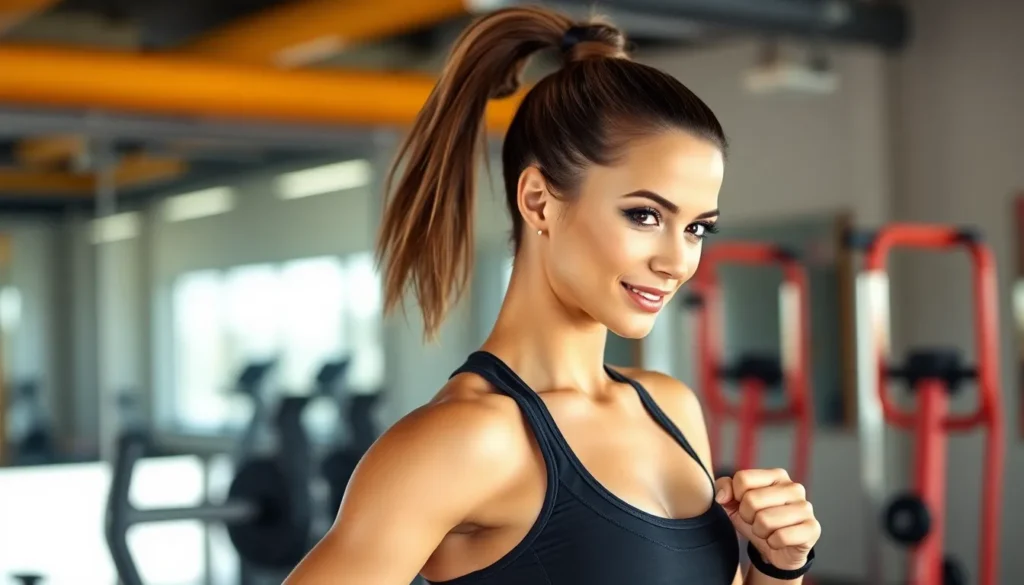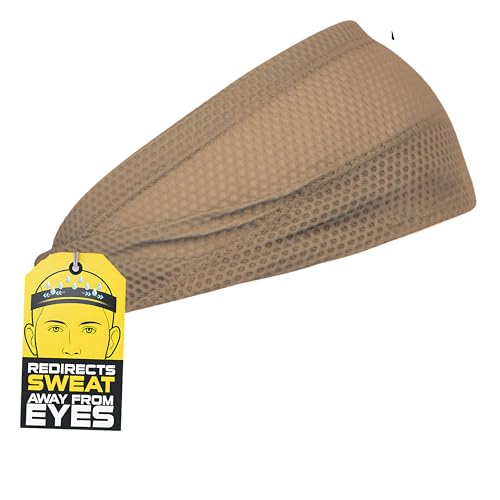We’ve all been there – standing in front of the mirror before a workout wondering how to keep our hair looking decent while we sweat it out. Finding the perfect workout hairstyle that’s both functional and stylish doesn’t have to be a daily struggle.
The right hairstyle can make or break your exercise routine. Nobody wants hair falling in their face during burpees or feeling self-conscious about a messy ponytail in the gym mirror. We need styles that’ll stay put through the toughest HIIT sessions while still looking put-together enough for post-workout errands.
Whether you’re dealing with short layers that won’t stay back or long hair that seems impossible to tame, we’ve got the answers you need. From quick five-minute fixes to styles that’ll last through multiple workouts, these game-changing hairstyles will transform how you approach your fitness routine. Say goodbye to bad hair days at the gym forever.
Classic High Ponytail: The Ultimate Sweat-Proof Style
The high ponytail stands as our go-to workout hairstyle because it keeps hair completely off the neck and face during intense training sessions. We’ve tested this timeless style through countless gym sessions and found it delivers unmatched reliability for every fitness activity.
How to Create the Perfect High Ponytail
Brush your hair upward toward the crown of your head, gathering all strands at the highest point of your skull. Secure the ponytail with a strong elastic band, wrapping it 2-3 times for optimal hold during movement. Smooth any flyaways with a small amount of hair gel or pomade applied to damp hands before styling.
Position the ponytail at ear level or higher to prevent it from hitting your neck during cardio exercises like running or cycling. Tighten the elastic by gently tugging sections of hair near the crown to create volume and ensure the style stays put. Wrap a small section of hair around the elastic base to conceal it and add a polished finishing touch.
Best Hair Ties for Secure Hold
Spiral hair ties like invisibobble or Kitsch provide superior grip without leaving creases or causing breakage during workouts. Silicone bands offer excellent stretch and recovery, making them ideal for thick or curly hair textures that need extra security.
| Hair Tie Type | Best For | Durability Rating |
|---|---|---|
| Spiral/Coil | All hair types | 9/10 |
| Silicone bands | Thick, curly hair | 8/10 |
| Fabric elastics | Fine hair | 7/10 |
| No-slip bands | Slippery hair | 8/10 |
Fabric covered elastics work well for fine hair but may slip during high intensity workouts like HIIT or spinning classes. No-slip bands with rubber grips excel at holding slippery or freshly washed hair that tends to slide out of regular elastics.
Styling Tips for Different Hair Textures
Fine hair benefits from texturizing spray applied before creating the ponytail to add grip and prevent slippage during exercise. Tease the crown section gently with a comb to create volume that won’t flatten under a baseball cap or headband.
Thick hair requires sectioning into upper and lower portions, securing each separately before combining into one high ponytail for better control. Use two elastics placed one inch apart to distribute weight and prevent the style from drooping during long workout sessions.
Curly hair performs best when styled while damp with leave-in conditioner to reduce frizz and maintain definition throughout your fitness routine. Scrunch the ponytail length with your hands after securing to enhance natural curl patterns and create an intentionally textured look.
Straight hair stays sleekest when you apply a small amount of smoothing serum before gathering, then finish with light hairspray for extra hold. Avoid over-brushing once the ponytail is secured to prevent creating static or unwanted volume at the base.
Braided Crown: Elegant and Functional Workout Hair

Braided crowns combine sophisticated styling with superior staying power during intense exercise sessions. This regal hairstyle keeps every strand securely in place while adding an elegant touch to your gym look.
Step-by-Step Braided Crown Tutorial
Creating the perfect braided crown starts with slightly damp hair for better grip and manageability. We recommend applying a texturizing spray or mousse to add volume and hold before beginning.
Beginning the braid process:
- Part your hair down the center from forehead to nape
- Separate a two inch section at your right temple
- Begin a dutch braid by crossing the outer sections under the middle strand
- Gradually incorporate hair as you braid along your hairline
Continuing around the head:
- Maintain consistent tension while braiding toward your left ear
- Keep the braid close to your hairline for maximum security
- Add small sections of hair with each crossover motion
- Continue braiding until you reach the starting point at your right temple
Securing the finished crown:
- Complete the braid with your remaining hair length
- Wrap the braid end around the base where you started
- Secure with bobby pins that match your hair color
- Tuck any loose ends underneath the crown for a polished finish
Variations for Short and Long Hair
Short hair braided crowns require modified techniques to achieve the same elegant effect. We suggest using smaller sections and incorporating all available length into the dutch braid pattern.
For shoulder length hair:
- Create two separate braids starting from each temple
- Meet the braids at the back of your head
- Twist the ends together and pin securely
- Use texturizing spray to add grip to shorter pieces
For long hair adaptations:
- Complete a full crown braid as described above
- Wrap excess length around the crown base multiple times
- Create a loose bun with remaining hair
- Pin the bun underneath the crown for added volume and security
For pixie cuts and very short styles:
- Focus on mini braids along the hairline only
- Use small elastic bands to secure each tiny braid
- Apply strong hold gel to keep shorter pieces in place
- Consider using headbands as decorative elements
Adding Hair Accessories for Extra Security
Hair accessories transform basic braided crowns into workout ready masterpieces while providing additional hold. We recommend choosing accessories that complement your personal style and exercise intensity level.
| Accessory Type | Best For | Security Level |
|---|---|---|
| Bobby Pins | All hair types | High |
| U-shaped Pins | Thick, heavy hair | Very High |
| Hair Clips | Medium to long hair | Medium |
| Elastic Headbands | Fine or slippery hair | High |
| Decorative Pins | Light workouts | Medium |
Strategic accessory placement:
- Insert bobby pins every two inches along the crown
- Place U-shaped pins at stress points where braids meet
- Add elastic headbands behind the hairline for extra grip
- Use decorative pins at the temples for style and function
- Select metal free options to prevent hair breakage
- Choose colors that blend with your natural hair tone
- Opt for rubber gripped accessories for sweaty workouts
- Consider silicone based products for gentle yet secure hold
Low Bun Perfection: Sleek and Stable for Any Workout
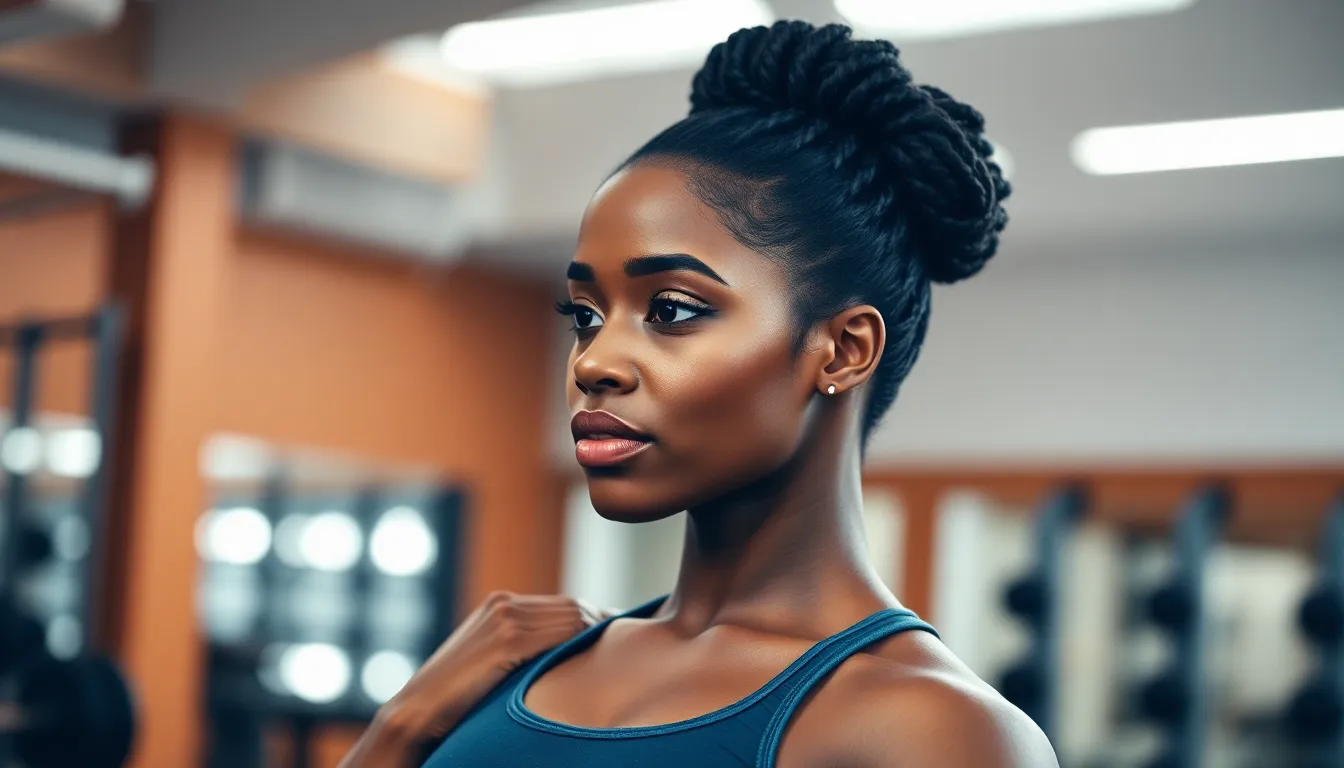
Low buns deliver sophisticated elegance while maintaining maximum stability during intense fitness sessions. This timeless workout hairstyle keeps hair completely off your neck and shoulders for optimal comfort.
Creating a Secure Low Bun Base
Start by gathering your hair into a low ponytail at the nape of your neck using a high-quality elastic band. Twist the ponytail length clockwise until it naturally begins to coil back on itself. Wrap the twisted section around the elastic base, creating a tight spiral motion that forms your bun foundation.
Pin the bun securely using bobby pins that match your hair color, inserting them at opposing angles to create an X-pattern grip. Push each pin through the bun and into the hair underneath to anchor the style against your scalp. Target the heaviest sections first, typically where your twisted hair overlaps the most.
Test your bun’s stability by gently tugging at different sections before starting your workout routine. Add extra bobby pins to any loose areas that feel wobbly or seem likely to slip during movement. A properly secured low bun should feel snug without causing tension headaches or scalp discomfort.
Preventing Flyaways and Frizz
Apply a light-hold gel or styling cream to damp hair before creating your low bun to control rebellious strands. Focus the product on your hairline, crown, and any areas prone to frizzing during physical activity. Smooth the product through with your palms using downward strokes to encourage hair to lay flat.
Use a fine-tooth comb or boar bristle brush to slick back any baby hairs around your face and temples. Mist a small amount of hairspray onto the brush before smoothing to add extra hold without creating stiffness. Pay special attention to the sides where sweat typically causes the most flyaway issues.
Carry a small smoothing serum in your gym bag for emergency touch-ups during particularly humid workout sessions. Dab a tiny amount onto your fingertips and gently pat down any areas where frizz begins to appear. This targeted approach prevents disturbing your entire hairstyle while maintaining that polished appearance.
Quick Touch-Up Tips Post-Workout
Remove bobby pins carefully by sliding them out in the opposite direction you inserted them to avoid snagging or breaking hair. Gently massage your scalp where the pins were placed to restore circulation and relieve any tension points. Let your hair down slowly to prevent tangling from the twisted bun structure.
Refresh your hair’s appearance by running a wide-tooth comb through the lengths to separate any sections that stuck together. Flip your head upside down and shake out the roots to restore volume that may have been flattened during your workout. This technique helps redistribute natural oils and eliminates the flat, pressed-down look.
Style your post-workout hair into loose waves by scrunching the lengths with your hands while they’re still slightly damp from perspiration. The natural texture created by the bun twist often produces beautiful, effortless waves that require minimal additional styling. Add a light texturizing spray if you want to enhance the wave pattern for the rest of your day.
Dutch Braids: Double the Style, Double the Hold
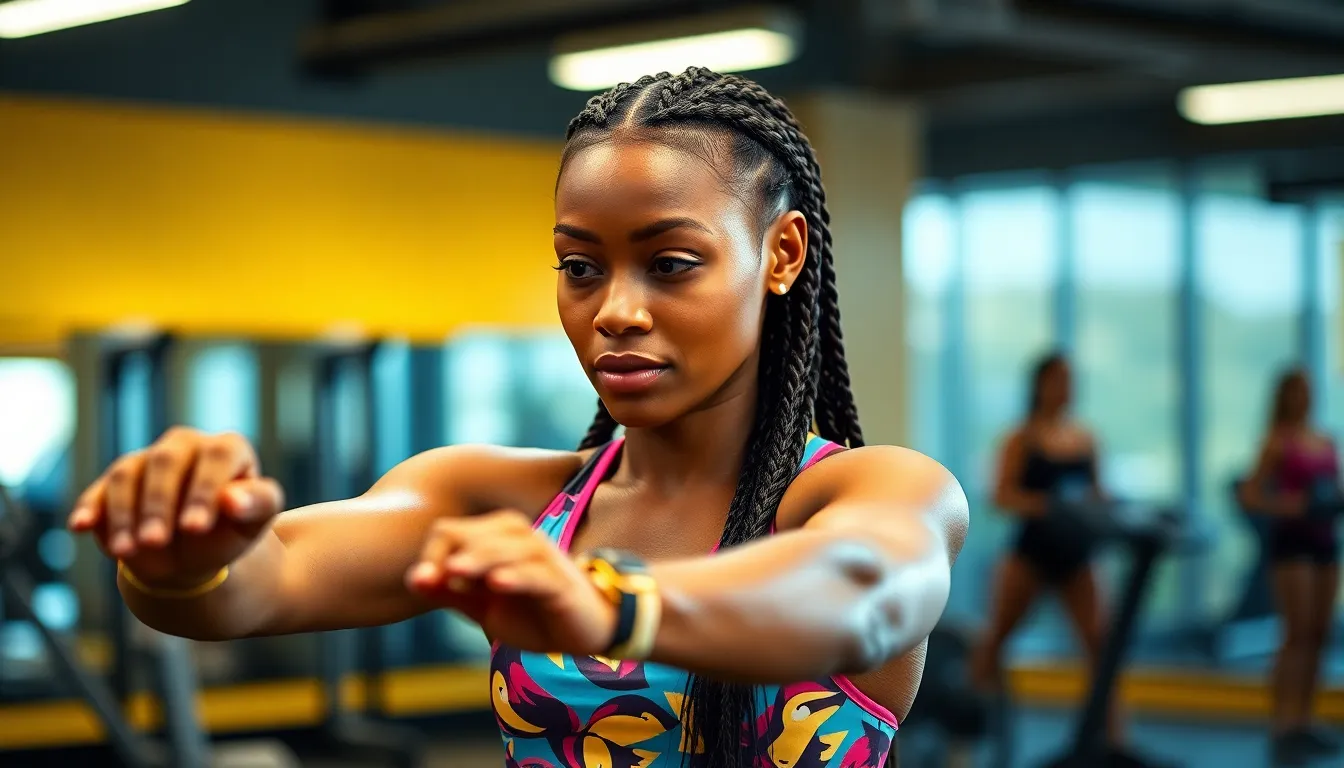
Dutch braids offer superior hold compared to traditional French braids, making them the perfect foundation for demanding workout sessions. We’ll show you how to master this versatile style that transforms from gym ready to street chic.
Mastering the Dutch Braid Technique
Start with slightly damp hair for the best grip and longevity during your workout. Apply a texturizing spray to clean hair, focusing on the roots and mid lengths for added volume and hold.
Section your hair down the middle to create two equal portions for double Dutch braids. Use a rat tail comb to ensure a clean, straight part from your forehead to the nape of your neck.
Begin the Dutch braid by taking a 2 inch section at your hairline and dividing it into three equal strands. Cross the right strand under the middle strand, then cross the left strand under the new middle strand.
Add hair to each section as you continue braiding down your head, incorporating small sections from the sides into the outer strands. Keep your hands close to your scalp for a tight, secure braid that won’t loosen during exercise.
Maintain consistent tension throughout the braiding process to ensure even sections and prevent lumps or loose areas. Pull each strand firmly but not so tight that it causes discomfort or headaches.
Secure each braid with a clear elastic band positioned about 2 inches from your hair ends. Wrap the elastic multiple times for extra security during high intensity workouts.
Incorporating Cornrows for Extra Grip
Create small cornrows along your hairline before starting your Dutch braids for athletes with fine or slippery hair. Part off 1 inch sections at the front of your head and braid them tightly against your scalp.
Blend the cornrows into your main Dutch braids by incorporating the cornrow ends as you begin the Dutch braid technique. This creates an anchor system that prevents flyaways and adds intricate detail to your style.
Use edge control product on the cornrow sections to smooth down baby hairs and create clean lines. Apply a small amount with a fine tooth comb or edge brush for precision styling.
Alternate cornrow directions for added visual interest and better hold during rotational exercises like spinning or dance fitness. Create some cornrows going toward your ears and others going straight back.
Finish with light hairspray over the cornrow sections to set the style without creating stiffness or flakes. Hold the bottle 8 inches away from your head for even distribution.
Transitioning from Gym to Street Style
Gently tug at the braid sections after your workout to create a fuller, more relaxed appearance suitable for casual outings. Start from the bottom of each braid and work your way up for even loosening.
Remove the elastics carefully and finger comb the bottom 3 inches of each braid to create soft, textured ends. This prevents the harsh lines that tight elastics can create in your hair.
Add statement hair accessories like metallic clips or fabric scrunchies to elevate the look from athletic to fashionable. Position accessories at the nape of your neck or halfway down each braid for maximum impact.
Wrap the braids into a low chignon for professional settings by twisting each braid around itself and securing with bobby pins. Tuck the ends under and pin them invisibly for a polished finish.
Create face framing pieces by gently pulling out small sections around your temples and curling them with your fingers. This softens the overall look and adds movement to the structured braids.
Apply dry shampoo to your roots if needed to refresh your hair and add volume after removing the braids. Focus on areas where sweat may have accumulated during your workout.
Top Knot Magic: Quick and Effortless Hair Solutions
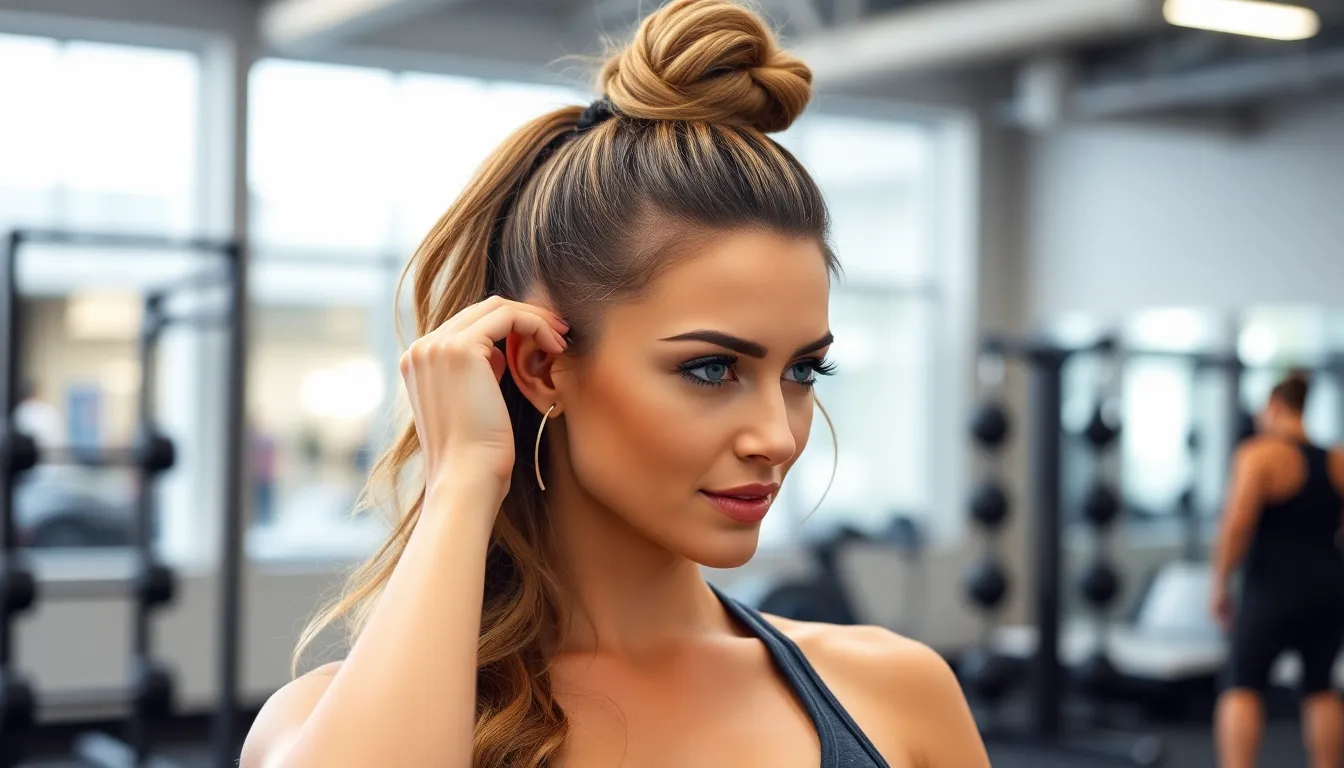
Top knots deliver the perfect combination of speed and sophistication for your workout routine. This versatile style works beautifully as a transition from the previous bun and braid techniques we’ve covered.
The 30-Second Top Knot Method
Gather your hair into a high ponytail at the crown of your head using a strong elastic. Twist the ponytail length clockwise until it naturally wants to coil back on itself. Wrap the twisted section around the base of the ponytail, creating a neat spiral. Secure the end with bobby pins, tucking any loose pieces under the coil.
Fine hair benefits from texturizing spray applied before gathering to create grip and volume. Thick hair requires dividing the ponytail into two sections before twisting to manage the bulk effectively. Curly hair should be twisted while slightly damp to maintain the coil’s shape throughout your workout.
Using Hair Elastics and Bobby Pins Effectively
Choose seamless elastics that won’t snag or break your hair during removal. Position the primary elastic at least two inches from your scalp to create the foundation for wrapping. Insert bobby pins in an X pattern at the base of the knot for maximum security.
| Hair Type | Elastic Type | Bobby Pin Count | Placement Strategy |
|---|---|---|---|
| Fine | Silicone coated | 4-6 pins | Cross pattern at base |
| Thick | Wide fabric | 6-8 pins | Multiple anchor points |
| Curly | Spiral elastics | 3-5 pins | Follow natural curl direction |
| Straight | Standard seamless | 4-6 pins | Tight cross formation |
Match bobby pins to your hair color for a seamless look that hides any visible hardware. Spray pins with hairspray before insertion to increase their gripping power on smooth hair textures.
Styling Options for Different Hair Lengths
Shoulder length hair creates the most classic top knot proportions with enough length to wrap twice around the base. Long hair can be twisted into multiple coils or braided before wrapping for added texture and security. Medium length hair works best when you leave some pieces deliberately loose for a more relaxed aesthetic.
Short hair owners can create a mini top knot by gathering just the top section and leaving the bottom layers down. Add a headband or hair scarf to blend the shorter pieces seamlessly with your workout look. Layered cuts benefit from smoothing serum applied to the crown area before gathering to control any choppy pieces.
Bob length hair requires strategic teasing at the roots to create enough height for the knot structure. Pixie cuts can incorporate just the longest top pieces into a tiny knot while using gel to slick back the shorter sides.
Headband Hairstyles: Fashionable Sweat Management
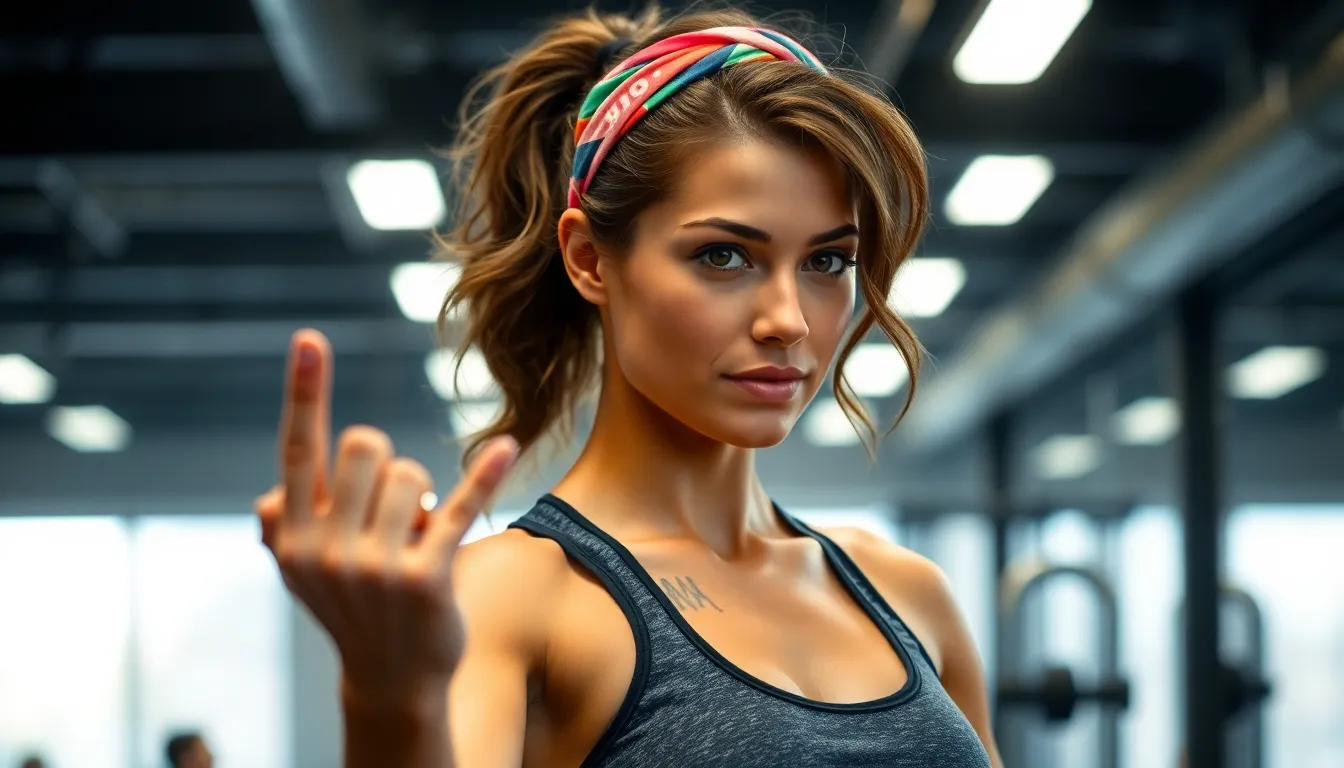
Athletic headbands combine practical sweat management with effortless style, making them perfect for workouts when elaborate braiding feels overwhelming. We’ve found these versatile accessories work exceptionally well for medium to long hair that tends to fall forward during exercise.
Choosing the Right Athletic Headband
Material selection determines your headband’s performance during intense workouts. Moisture wicking fabrics like polyester blends and bamboo fiber keep sweat away from your face while preventing slipping. We recommend avoiding cotton headbands since they absorb moisture and become heavy during extended exercise sessions.
Width affects both comfort and hair control throughout your workout routine. Narrow headbands measuring 1-2 inches work best for fine hair and light activities like yoga or stretching. Wide headbands spanning 3-4 inches provide superior grip for thick hair and high intensity workouts like CrossFit or running.
Grip technology ensures your headband stays secure during movement. Silicone strips along the inner band prevent sliding on sweaty skin, while textured fabrics create natural friction. We’ve tested headbands with rubberized backing and found they offer the most reliable hold during burpees and jump squats.
| Headband Feature | Best For | Workout Type |
|---|---|---|
| Moisture-wicking fabric | All hair types | High intensity |
| Silicone grip strips | Fine to medium hair | Cardio workouts |
| Wide band (3-4 inches) | Thick, curly hair | Weight training |
| Narrow band (1-2 inches) | Fine hair | Yoga, pilates |
Pairing Headbands with Loose Hairstyles
Low ponytails become instantly more polished when paired with athletic headbands. Position the headband about 2 inches from your hairline, then gather hair into a loose ponytail at the nape of your neck. This combination prevents face framing pieces from escaping while maintaining an effortless appearance.
Messy buns gain structure and style when topped with the right headband. Create a loose bun by twisting hair into a casual knot and securing with an elastic. Add your headband after forming the bun to catch any shorter layers that might fall forward during planks or downward dog poses.
Half up styles work perfectly with headbands for maximum hair control. Gather the top section of your hair into a small ponytail or clip, leaving the rest flowing freely. Position the headband to catch any pieces around your temples and ears that typically escape traditional half up arrangements.
Beach waves complement wide headbands for a relaxed yet put together look. Apply texturizing spray to damp hair, scrunch gently, and let air dry for natural movement. The headband adds structure while allowing your waves to flow freely behind your shoulders during stretching or mat work.
DIY Headband Hair Wrap Techniques
Creating a twisted headband wrap adds bohemian flair to basic workout hair. Start with a wide elastic headband and position it around your head like a crown. Take sections of hair from each side and twist them around the headband, tucking the ends underneath to secure naturally.
Braided headband wraps offer superior hold for demanding workout sessions. Begin with a thin section of hair near your ear and create a small braid. Wrap this braid around your head like a headband, securing with bobby pins behind the opposite ear. This technique works especially well for those with layered cuts.
Knotted fabric headbands provide customizable style and perfect fit every time. Cut a strip of stretchy fabric 4 inches wide and 24 inches long from old athletic wear. Tie the ends together to create a loop, then twist and fold the fabric for varied width and texture patterns.
Double headband layering creates dimension while ensuring no hair escapes. Start with a thin elastic headband close to your hairline, then add a wider decorative headband 2 inches behind it. This technique captures every short layer while adding visual interest to simple ponytails or loose hair.
French Braid Variations: Classic Meets Athletic

French braids merge timeless elegance with unmatched functionality for our toughest workout sessions. These versatile styles keep every strand secure while adding sophisticated flair to our gym look.
Traditional French Braid for Workouts
Traditional French braids deliver superior hold compared to loose hairstyles during high intensity training sessions. We start by sectioning damp hair into three equal parts at the crown, then gradually incorporate side sections as we braid downward. This technique creates a tight, secure foundation that won’t budge during burpees or spinning classes.
Perfecting the technique requires consistent tension throughout the braiding process. Pull each section firmly as you cross it over the middle strand, ensuring no loose pieces escape our grip. We recommend applying a light hold gel to the roots before starting, which helps fine hair maintain structure during extended workouts.
For maximum security during demanding exercises, we finish the braid at the nape and secure it with a snag free elastic. Wrapping a small section of hair around the elastic conceals the band while adding a polished touch to our athletic look.
Side French Braid Options
Side French braids offer asymmetrical elegance while providing the same workout stability as center braids. We begin this style by creating a deep side part, then starting our French braid technique from the heavier side of the part. This placement keeps hair away from our face during floor exercises and prevents interference with workout equipment.
Starting the braid behind one ear creates a dramatic sweep across the head. Pick up sections from the hairline as we work toward the opposite side, maintaining even tension to prevent the braid from loosening. We find this style particularly effective for yoga sessions where we frequently change positions.
Double side braids provide extra security for our most intense training days. Create two French braids starting from each temple, working them back toward the nape where we can either secure them separately or combine them into a single low ponytail. This technique distributes weight evenly across our head, reducing strain on any single point.
Incorporating Hair Extensions for Volume
Hair extensions transform thin French braids into fuller, more dramatic workout styles that maintain their shape throughout our fitness routines. We clip in extensions before beginning the braiding process, focusing on the mid lengths and ends where natural hair tends to be finest. This addition creates the appearance of thicker, longer braids without compromising their athletic functionality.
Choosing the right extension type ensures seamless integration with our natural texture. Clip in extensions work best for temporary volume during single workout sessions, while tape in extensions provide consistent fullness for our regular gym routine. We match the extension color precisely to our natural hair to maintain a cohesive look.
For optimal security, we braid extensions slightly tighter than our natural hair, since synthetic fibers can slip more easily than our own strands. Adding texturizing spray to both our natural hair and extensions before braiding creates additional grip that keeps everything in place during vigorous movement.
Twisted Side Styles: Asymmetrical Workout Hair Ideas
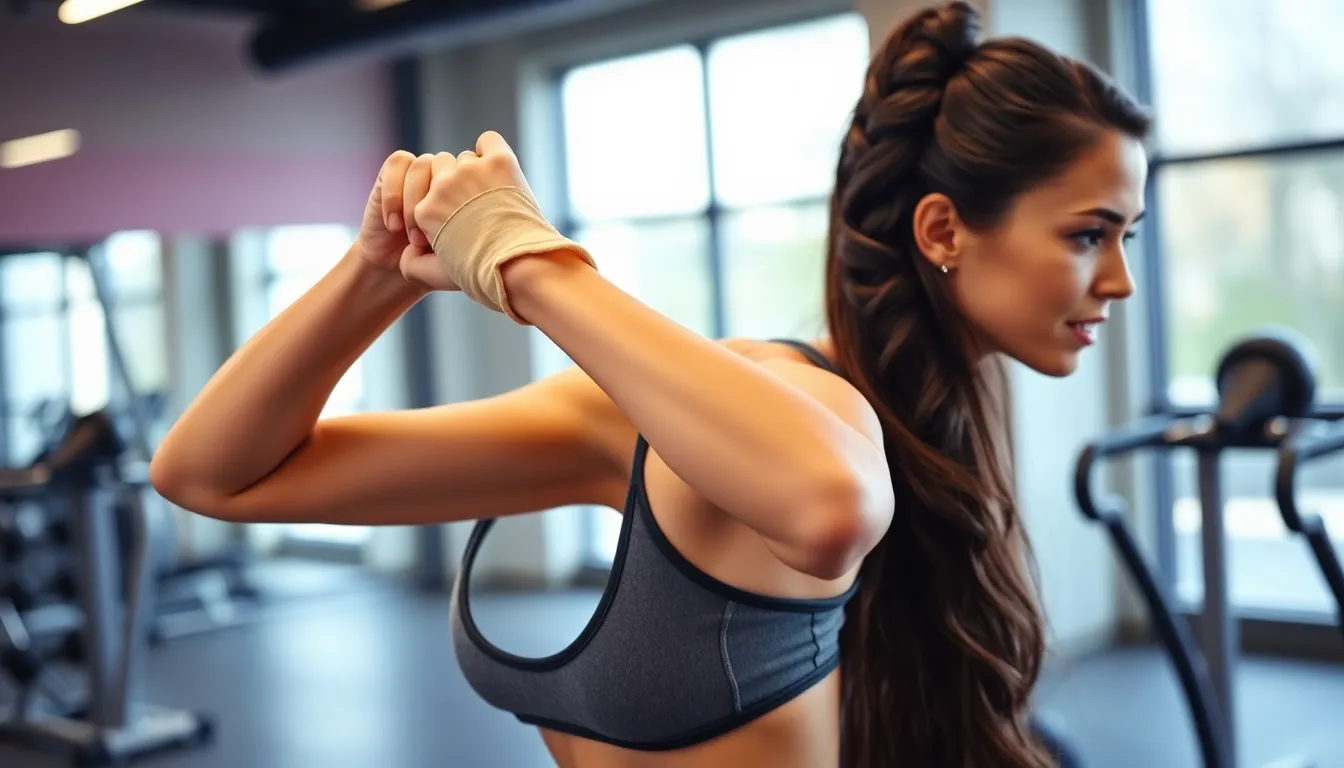
Breaking away from symmetrical workout hairstyles opens up a industry of creative possibilities that blend fashion with function. Twisted side styles offer unique answers for keeping hair secure while adding visual interest to your gym look.
Creating Secure Side Twists
Start with damp hair for maximum grip and twist longevity during intense workouts. We recommend applying a light-hold mousse from mid-length to ends before beginning the twisting process. Section off a 2-3 inch portion of hair starting from your temple and work toward the opposite ear.
Twist the hair away from your face using a rope twist technique, adding small sections as you work down the side of your head. Keep consistent tension throughout the process to prevent loosening during exercise. Secure the twist behind your ear with bobby pins that match your hair color.
Create multiple mini twists for extra security during high-intensity workouts like HIIT or spinning classes. We suggest making 3-4 smaller twists instead of one large twist to distribute weight evenly. Pin each twist individually to prevent the entire style from falling if one section comes loose.
Finish with strong-hold hairspray to lock the twists in place and combat humidity from sweating. Focus the spray application on the twisted sections rather than your entire head to maintain natural movement in the rest of your hair.
Combining Twists with Ponytails
Gather your twisted side section into a low ponytail positioned at the nape of your neck for optimal stability during cardio sessions. This combination keeps face-framing pieces secure while maintaining a sleek silhouette. The asymmetrical twist adds visual interest to an otherwise basic ponytail style.
Create a half-up twisted ponytail by securing only the top portion of your hair while leaving the bottom section loose. We find this style works particularly well for yoga and pilates where you need hair off your shoulders but want movement in the back. Use a clear elastic to maintain the clean lines of your twist.
Add texture to your ponytail base by gently tugging at the twisted section to create volume before securing with an elastic. This technique prevents the flat appearance that often occurs when combining multiple styling techniques. The added dimension makes your workout hairstyle look intentionally styled rather than rushed.
Incorporate a side braid alongside your twist to create a multi-textural ponytail that stays put during jumping exercises and burpees. Start the braid from the opposite side of your twist and merge both elements into your ponytail elastic for maximum security.
Best Products for Twist Definition
Texturizing paste provides the ideal combination of hold and flexibility for workout twists that need to last through sweat sessions. We recommend applying a dime-sized amount to damp hair before twisting to enhance grip without creating stiffness. Look for products specifically formulated for active lifestyles that won’t break down under moisture.
Sea salt spray adds natural texture and volume to fine hair that typically struggles to hold twisted styles. Apply the spray to towel-dried hair and scrunch gently before creating your twists. This product works especially well for creating beachy, undone twists that look effortless yet secure.
Lightweight hair oil smooths frizz and adds shine to completed twists without weighing down your style during workouts. We suggest using argan or jojoba oil applied sparingly to the finished twists. Avoid heavy oils that can make hair appear greasy under gym lighting.
| Product Type | Best For | Application Amount | Hold Duration |
|---|---|---|---|
| Texturizing Paste | All hair types | Dime-sized | 4-6 hours |
| Sea Salt Spray | Fine to medium hair | 3-4 pumps | 3-4 hours |
| Lightweight Oil | Thick or coarse hair | 2-3 drops | 5-7 hours |
| Strong-hold Gel | Curly hair | Quarter-sized | 6-8 hours |
Anti-humidity serum creates a protective barrier against sweat and moisture that can cause twists to fall flat or frizz during outdoor workouts. Apply this product as your final step to seal in your style and extend its lifespan through challenging weather conditions.
Short Hair Workout Solutions: Styles for Cropped Cuts
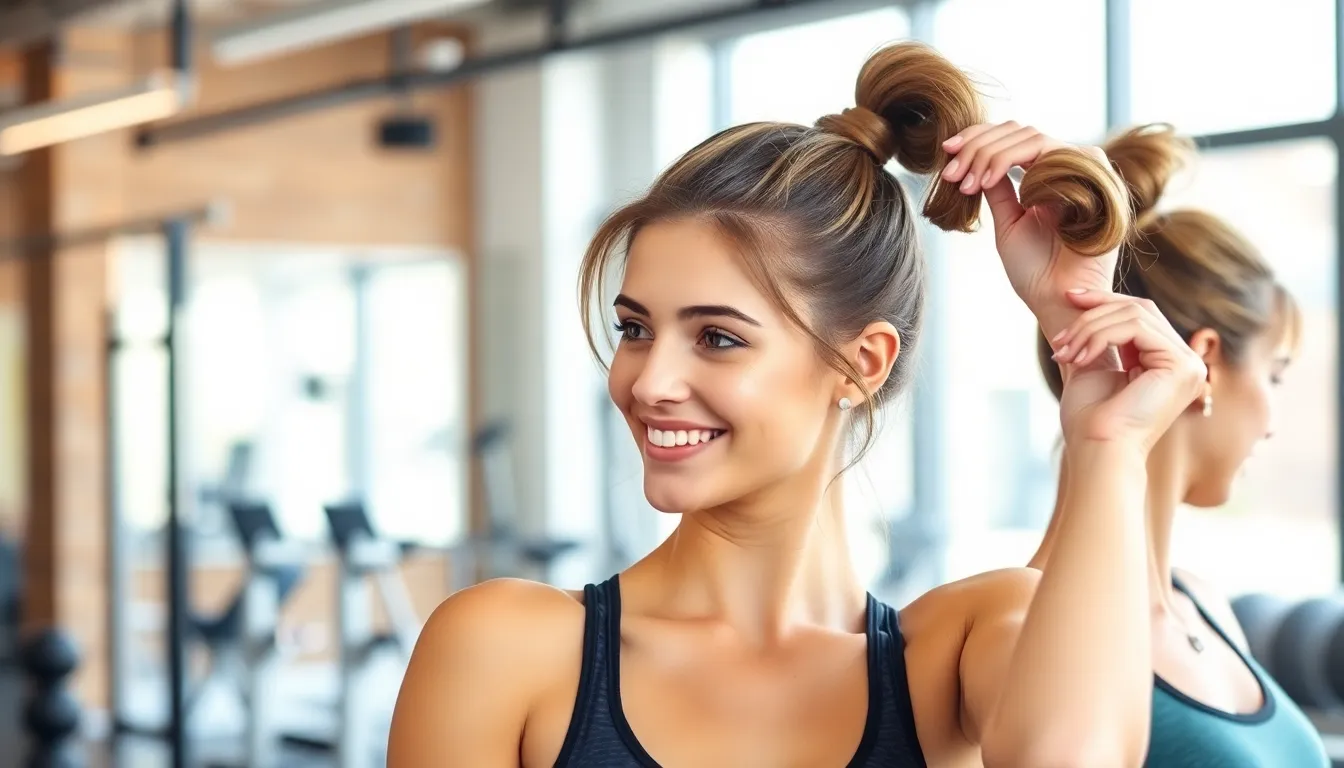
Short hair doesn’t limit your workout styling options. Creating functional and stylish looks for cropped cuts requires exact techniques and products designed for shorter lengths.
Texturizing Sprays and Styling Products
Volumizing texture spray transforms fine short hair into grippy, workable strands. We recommend applying these products to damp hair before blow drying to create maximum lift at the roots. Sea salt sprays add natural texture and hold without weighing down pixie cuts or bob hairstyles.
Dry shampoo serves as both a cleansing and styling product for short workout hair. Apply it before exercising to absorb excess oil and create texture that makes styling easier. Lightweight mousse works particularly well for shorter cuts, providing hold without the stiffness that longer hair can handle.
Matte pomade offers flexible hold for textured short styles during workouts. Use a small amount to piece out layers or create definition in choppy cuts. Texturizing paste provides separation and movement while maintaining control throughout your exercise routine.
Mini Ponytails and Hair Clips
Tiny elastics create multiple mini ponytails when your hair’s too short for one full ponytail. Section hair horizontally and secure small ponytails at different levels for both function and style. These micro ponytails work especially well for growing out pixie cuts or managing awkward lengths.
Claw clips designed for short hair provide instant style and sweat control. Look for smaller clips that grip shorter lengths without slipping during movement. Metal clips with rubber grips offer superior hold compared to plastic versions.
Bobby pin patterns create functional art on short hair during workouts. Cross bobby pins in X patterns to secure stubborn pieces that won’t stay in ponytails. Strategic pinning of side swept bangs or face framing layers keeps hair out of your eyes during intense training sessions.
Snap clips offer quick answers for securing shorter sections. Use multiple small clips to pin back layers that fall forward during exercise. Clear or matching colored clips blend seamlessly with your natural hair color for a polished appearance.
Sweat Resistant Styling Techniques
Pre workout prep starts with slightly damp hair for better product absorption. Apply anti humidity serum from mid lengths to ends before styling to create a moisture barrier. This technique prevents frizz and maintains your chosen style throughout your workout.
Flat pinning technique secures short layers against your head using crossed bobby pins. Pin each section close to the scalp rather than on top of hair for maximum hold. This method works particularly well for maintaining slicked back pixie styles during high intensity workouts.
Strategic product layering builds long lasting hold in short hair. Start with a volumizing mousse, add texturizing spray for grip, then finish with a light hold hairspray. Each layer serves a exact purpose in creating sweat resistant style.
Post workout refresh involves targeted touch ups rather than complete restyling. Use a small amount of dry shampoo at roots and scrunch with your fingers to restore texture. A light misting of sea salt spray revives natural wave patterns in shorter cuts without requiring heat styling.
Post-Workout Hair Refresh: Quick Recovery Techniques
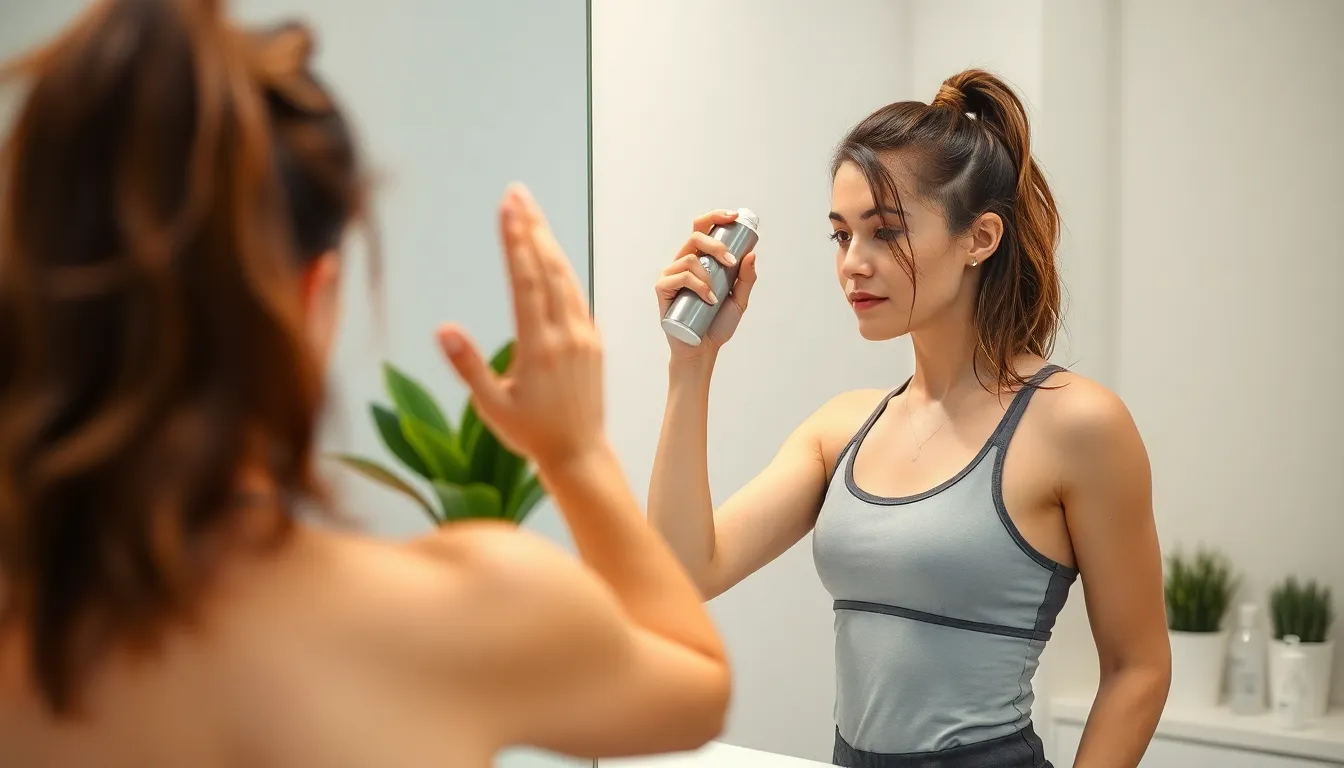
We’ve mastered the art of workout hairstyles, but the real challenge begins when our fitness session ends and we need to transform our post-exercise hair into something presentable for the rest of our day.
Dry Shampoo Application Methods
Strategic sectioning transforms dry shampoo from a quick fix into a professional-grade refresh technique. We recommend dividing hair into four quadrants and lifting each section to spray directly at the roots from 6 inches away. This method ensures even coverage and prevents that telltale white residue that screams “I haven’t washed my hair.”
Timing matters more than most people realize when using dry shampoo post-workout. We apply it immediately after removing our workout hairstyle while our hair is still slightly damp from sweat. The moisture helps the product distribute evenly and absorb oils more effectively than applying to completely dry hair.
Massage techniques amplify dry shampoo’s effectiveness exponentially. We use our fingertips to work the product through our roots in circular motions for 30 seconds per section. This stimulates blood flow to the scalp and helps the product penetrate deeper into oil-heavy areas around our hairline and crown.
Product layering creates the most natural-looking results when dealing with post-workout hair. We start with a volumizing dry shampoo at the roots, follow with a texturizing spray through the mid-lengths, and finish with a light misting of shine spray for that just-styled appearance.
Hair Mist and Leave-In Treatments
Hydrating mists restore moisture balance that intense workouts strip from our hair cuticles. We spray a lightweight leave-in conditioner from mid-length to ends, focusing on areas that tend to dry out first like the nape of our neck and around our ears. These products contain humectants that attract moisture from the air back into our hair shaft.
Heat protection sprays become essential when we need to use styling tools for our post-workout transformation. We apply thermal protectant to damp hair sections before blow-drying, creating a barrier that prevents protein damage from high temperatures. This step is crucial for maintaining hair health with frequent styling.
Detangling treatments eliminate knots without causing breakage when we’re rushing to get ready. We work a leave-in detangler through our hair with a wide-tooth comb, starting from the ends and working upward. This method prevents the tugging and pulling that can damage weakened post-workout hair.
Scalp-soothing formulas address irritation from tight hairstyles and sweat buildup during exercise. We massage cooling mint or tea tree-infused treatments directly onto our scalp, paying special attention to areas where headbands or hair ties created pressure points.
Transitioning Workout Hairstyles to Daily Looks
Braid transformation turns our secure Dutch or French braids into romantic loose waves within minutes. We carefully remove the elastic, gently separate the braid with our fingers, and shake out the waves. A light spritz of texturizing spray enhances the natural wave pattern while adding touchable movement.
Ponytail evolution upgrades our high workout ponytail into an elegant low chignon perfect for professional settings. We lower the ponytail to the nape of our neck, twist the hair length around the base, and secure with bobby pins that match our hair color. This transformation takes less than two minutes but looks completely intentional.
Top knot refinement softens our gym-ready top knot into a sophisticated twisted updo. We release the elastic slightly to create volume at the crown, twist loose pieces around our face, and strategically place bobby pins to frame our features. The result appears effortlessly chic rather than athletic.
Headband removal strategy prevents the dreaded headband dent that can ruin our post-workout appearance. We massage our scalp where the headband sat, use a boar bristle brush to redistribute natural oils, and create subtle height at the crown by gently lifting sections with a fine-tooth comb. These techniques restore our hair’s natural movement and eliminate compression marks.
Conclusion
We’ve covered everything you need to master workout hairstyles that actually work. From classic ponytails to intricate braided crowns these techniques will keep you looking polished while you sweat.
Remember that the key to great gym hair lies in preparation and the right products. Whether you’re working with short hair or long locks there’s a solution that fits your routine and intensity level.
Don’t let bad hair days derail your fitness goals. With these tried-and-tested styles you’ll feel confident hitting the gym knowing your hair will stay put. Practice these techniques at home first and you’ll be able to create them quickly before any workout.
Your hair should never be the reason you skip exercise. These versatile styles prove that you can look amazing while crushing your fitness goals.
Frequently Asked Questions
What are the best workout hairstyles that won’t fall apart during exercise?
The most reliable workout hairstyles include high ponytails, Dutch braids, low buns, top knots, and braided crowns. These styles use secure techniques like tight braiding, strategic bobby pin placement, and strong hair elastics to withstand intense movement and sweat while maintaining their shape throughout your workout.
How do I create a sweat-proof high ponytail for my hair type?
Start by applying texturizing spray to damp hair for grip. Use a boar bristle brush to smooth hair into a high position, secure with a snag-free elastic, and wrap a small section of hair around the base. For fine hair, tease the crown slightly; for thick hair, use two elastics for extra security.
What’s the difference between French braids and Dutch braids for workouts?
Dutch braids offer superior hold compared to French braids because the braiding technique creates a raised, more secure pattern that sits tighter against the scalp. This makes Dutch braids ideal for high-intensity workouts, as they’re less likely to loosen or create flyaways during vigorous movement.
How can I style short hair for workouts effectively?
Use volumizing texture spray and dry shampoo as a base, then try mini ponytails with small elastics, secure sections with claw clips, or create innovative bobby pin patterns. Apply products before your workout and use strategic layering techniques to ensure your short style stays put during exercise.
What headband materials work best for athletic activities?
Choose moisture-wicking synthetic fabrics or blends that pull sweat away from your skin. Avoid cotton headbands as they absorb moisture and become heavy. Look for bands with silicone grip technology and select wider bands (1-2 inches) for better coverage and security during high-intensity workouts.
How do I prevent my workout hairstyle from getting frizzy?
Apply anti-humidity serum before styling, use lightweight hair oils on the mid-lengths and ends, and choose styling products with humidity protection. For post-workout, use hydrating mists and leave-in treatments to restore moisture and smooth frizz without weighing down your hair.
What are the best hair accessories for workout hairstyles?
Snag-free hair elastics, bobby pins that match your hair color, small claw clips, and athletic headbands with grip technology are essential. For braided styles, use clear elastics at the ends and small bobby pins to secure loose pieces. Choose accessories designed specifically for active wear.
How can I quickly refresh my hair after a workout?
Apply dry shampoo to roots using strategic sectioning, massage gently for absorption, then use a hydrating mist on lengths. For styled hair, carefully remove bobby pins, shake out braids into loose waves, or transform ponytails into casual buns for an instantly refreshed look.
What products should I use for twist hairstyles during workouts?
Start with light-hold mousse for grip, add texturizing paste for definition, and finish with sea salt spray for hold. Use anti-humidity serum to protect against sweat and moisture. These products work together to maintain twist definition while preventing frizz during intense exercise sessions.
How do I transition my workout hairstyle to a day look?
Loosen braids by gently pulling apart sections for relaxed waves, upgrade ponytails by wrapping them into elegant chignons, or refine messy buns by smoothing flyaways with a small brush and light-hold hairspray. Add subtle accessories like hair pins or scarves for a more polished appearance.

